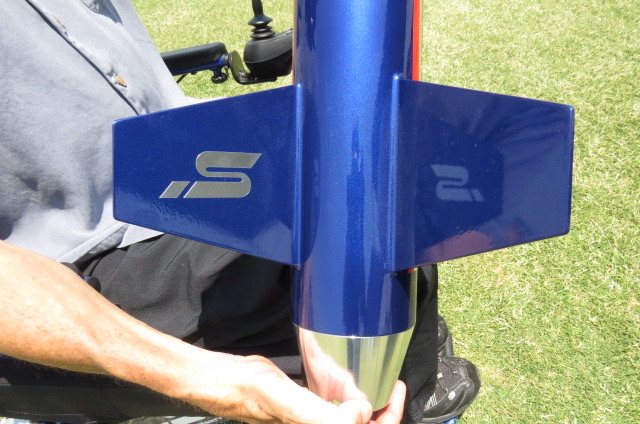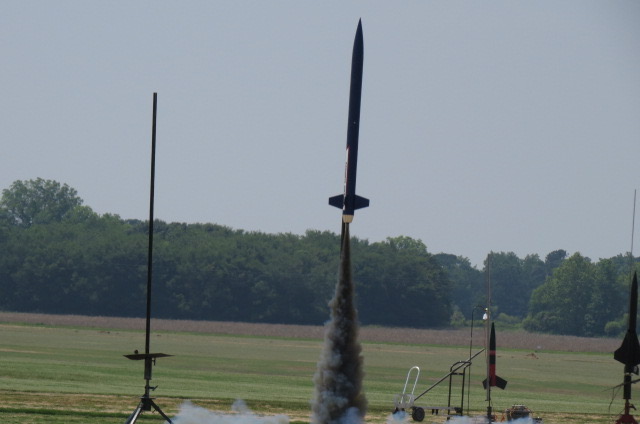I know there is no absolute answer, but that, for some reason doesn’t stop me from constantly dwelling trying to figure out what is the perfect rocket for my situation. And there probably isn’t one. Which drives me to keep churning websites. At some point I just need to make a decision.
So, here is where I’m at, I have my L1, not exactly ready to pursue L2, looking to dip my toes into dual deploy. I’ve also decided that I’d like to go fiberglass, 54mm MMT with a 38mm adapter.
It was originally going to be my intent to get the apogee level 2 because it is a fairly complete kit with excellent instructions, which is very important to me. The price is pretty high, coming in at $435. It’s a 4 inch rocket, which means it’s going to need bigger motors, and that limits me. So I thought well maybe I need to look at 3 inch fiberglass kits. So I made a spreadsheet and put several rockets on there that I liked the looks of. Pretty much narrowed it down to the following:
Darkstar 3” DD Fiberglass: I like the name, like the looks, but my biggest hang up is I feel it’s too tall. Thought about cutting it down a bit? I’m looking for something 65” - 70ish” tall.
Punisher 3: love the look, not exactly a fan of HEDD for my first DD platform. Short rocket, but thought maybe I add a tube and coupler and convert it to a more traditional DD setup.
MAC Performance Zodiac: like the look, seems to be a good size, haven’t seen many built searching around here, but not fiberglass. XX Phenolic?
So yea. There I am, torn between all of them. Still partially considering circling back to the apogee level two because it feels like a safe choice lol. I think part of the problem here is, I am a bit of a perfectionist, and not knowing the level of instruction that is included with the kits (aside from apogee) makes me nervous, because if left to my own judgment, I’ll likely screw something up! But I’d also like to try something besides apogee…
I know questions about my local field will come in to play, but I feel this list of rockets would play well at any field. They all have motors that will keep them under 2000 feet, and they all have motors that will send them up to 10,000 feet. So when flying at my local field, I’ll just use the motors that keep it with those limits. And when air fest comes around, we will stretch our legs a little.
Can someone just make up my mind and put me at ease please?!?
So, here is where I’m at, I have my L1, not exactly ready to pursue L2, looking to dip my toes into dual deploy. I’ve also decided that I’d like to go fiberglass, 54mm MMT with a 38mm adapter.
It was originally going to be my intent to get the apogee level 2 because it is a fairly complete kit with excellent instructions, which is very important to me. The price is pretty high, coming in at $435. It’s a 4 inch rocket, which means it’s going to need bigger motors, and that limits me. So I thought well maybe I need to look at 3 inch fiberglass kits. So I made a spreadsheet and put several rockets on there that I liked the looks of. Pretty much narrowed it down to the following:
Darkstar 3” DD Fiberglass: I like the name, like the looks, but my biggest hang up is I feel it’s too tall. Thought about cutting it down a bit? I’m looking for something 65” - 70ish” tall.
Punisher 3: love the look, not exactly a fan of HEDD for my first DD platform. Short rocket, but thought maybe I add a tube and coupler and convert it to a more traditional DD setup.
MAC Performance Zodiac: like the look, seems to be a good size, haven’t seen many built searching around here, but not fiberglass. XX Phenolic?
So yea. There I am, torn between all of them. Still partially considering circling back to the apogee level two because it feels like a safe choice lol. I think part of the problem here is, I am a bit of a perfectionist, and not knowing the level of instruction that is included with the kits (aside from apogee) makes me nervous, because if left to my own judgment, I’ll likely screw something up! But I’d also like to try something besides apogee…
I know questions about my local field will come in to play, but I feel this list of rockets would play well at any field. They all have motors that will keep them under 2000 feet, and they all have motors that will send them up to 10,000 feet. So when flying at my local field, I’ll just use the motors that keep it with those limits. And when air fest comes around, we will stretch our legs a little.
Can someone just make up my mind and put me at ease please?!?










